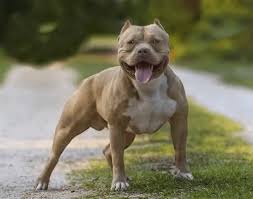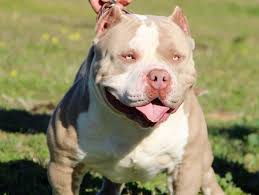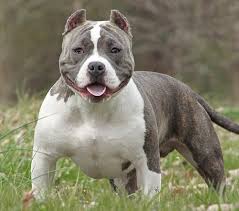Bully Pits, or American Pit Bull Terriers, have often been portrayed negatively in the media and popular culture, fueling misconceptions about their temperament and behavior. In reality, these dogs possess a loving and loyal nature, and their reputation as aggressive or dangerous pets is a result of misunderstandings and misrepresentation.
This article aims to shed light on the true nature of the Bully Pit, highlighting their positive qualities, dispelling common myths, and promoting responsible ownership.
Contrary to popular belief, Bully Pits are not inherently aggressive. Like any other breed, their temperament is shaped by their genetics, socialization, and environment. When properly trained, socialized, and given a loving home, they exhibit remarkable loyalty, intelligence, and a natural desire to please their owners. They often excel in activities like obedience, agility, and therapy work due to their intelligence and eagerness to learn.
Bully Pits thrive in loving and responsible homes where they receive ample attention, exercise, and mental stimulation. They form strong bonds with their families and are known for their affectionate nature, often showering their loved ones with cuddles and kisses. They are gentle and patient with children when raised and socialized appropriately, and can be a loyal and devoted companion to people of all ages.
Proper training and socialization are key factors in nurturing a well-rounded and obedient Bully Pit. Early exposure to different environments, people, and animals helps them develop good manners and ensures they grow up to be confident and well-behaved individuals. Positive reinforcement-based training methods are highly effective with this breed, as they are eager to please their owners and respond well to rewards and praise.
Responsible ownership is crucial for any dog breed, and Bully Pits are no exception. Owning a Bully Pit requires commitment, time, and effort. Providing them with regular exercise, mental stimulation, a nutritious diet, routine veterinary care, and a safe environment are essential for their well-being. Additionally, ensuring they are spayed or neutered helps prevent unwanted litters and contributes to population control.
To combat the negative stereotypes associated with Bully Pits, it is essential to advocate for responsible ownership and educate the public about the breed’s true nature. Promoting positive experiences with Bully Pits, sharing success stories, and debunking common myths will help dispel misconceptions and foster a more accurate understanding of these wonderful companions.
Bully Pits, often misunderstood due to negative stereotypes, are in fact loving, loyal, and intelligent dogs. By focusing on responsible ownership, positive training, and public education, we can promote a more balanced perception of this breed. Let us appreciate and celebrate the remarkable qualities of the Bully Pit, ensuring that they receive the love, care, and respect they deserve as valued members of our families and communities.
Read Also: Harvesting and Processing Of Cacao Fruits
History and Origin of Bully Pit Dogs

The history and origin of the Bully Pit, also known as the American Pit Bull Terrier, can be traced back to the United States in the 19th century. The breed is a result of crossing Bulldogs, brought to America by English immigrants, with terriers. The primary purpose behind the breeding was to create a dog with a combination of the Bulldog’s strength and the terrier’s agility and tenacity.
Initially, these dogs were used for various working activities, such as bull-baiting, a popular sport in England at the time. They were also utilized for farm work, guarding livestock, and as general-purpose working dogs. Due to their athleticism, intelligence, and loyalty, they quickly gained popularity as versatile working companions.
In the early 20th century, the breed gained recognition and was officially registered by the United Kennel Club (UKC) in 1898. The American Kennel Club (AKC) initially recognized the breed as the Staffordshire Terrier in 1936 but changed the name to the American Staffordshire Terrier in 1972 to differentiate it from the Staffordshire Bull Terrier of England. The AKC does not officially recognize the term “Bully Pit” and continues to register them as American Staffordshire Terriers.
Throughout history, Bully Pits have been associated with their role as family dogs. They were often referred to as “America’s Nanny Dog” due to their reputation for being gentle, loyal, and protective of children. Their history is marked by their ability to form strong bonds with humans and their eagerness to please their owners.
Unfortunately, the breed’s reputation has been marred by irresponsible ownership, dogfighting, and media sensationalism. Incidents involving aggressive individuals of the breed have led to misconceptions and negative stereotypes, perpetuating the belief that all Bully Pits are inherently dangerous. However, it is important to note that a dog’s behavior is primarily influenced by its environment, training, and socialization.
Today, there are numerous responsible Bully Pit owners who advocate for the breed and work towards dispelling the misconceptions surrounding them. They emphasize responsible ownership, proper training, and socialization to ensure that these dogs can showcase their true nature as loving, loyal, and intelligent companions.
Understanding the history and origin of the Bully Pit helps provide context and debunk the myths that have surrounded this breed. By focusing on the positive qualities and responsible ownership, we can promote a more accurate perception of these remarkable dogs and appreciate them for the loving companions they are.
Health Issues and Lifespan of Bully Pit Dogs

Like any dog breed, the Bully Pit, or American Pit Bull Terrier, is prone to certain health issues. It’s important for potential owners to be aware of these conditions and take proactive measures to promote the overall health and well-being of their pets. Additionally, providing regular veterinary care and a balanced diet can help mitigate the risk of developing these issues. Here are some common health concerns associated with Bully Pits:
Hip Dysplasia: This is a hereditary condition where the hip joint doesn’t develop properly, leading to joint instability and eventual arthritis. Regular exercise, maintaining a healthy weight, and proper nutrition can help manage this condition.
Allergies: Bully Pits can be prone to various allergies, including food allergies, environmental allergies (such as pollen or dust mites), and skin allergies. Identifying and avoiding allergens, along with veterinary guidance, can help manage allergies and minimize discomfort.
Heart Disease: Some Bully Pits may be susceptible to certain heart conditions, such as dilated cardiomyopathy (enlarged heart) or congenital heart defects. Regular check-ups and screenings can aid in early detection and appropriate management.
Skin Issues: Due to their short coat, Bully Pits may be prone to skin irritations, dryness, and allergies. Regular grooming, maintaining good hygiene, and using appropriate skincare products can help prevent and manage skin problems.
Breed-Specific Legislation: Although not a health issue, it is important to mention that in certain regions, Bully Pits may face breed-specific legislation (BSL) or restrictions due to their perceived aggressive reputation. It’s essential to be aware of local laws and regulations concerning this breed.
Regarding the lifespan of Bully Pits, on average, they typically live between 12 to 14 years. However, with proper care, nutrition, exercise, and regular veterinary check-ups, some individuals have been known to live beyond that range.
Remember, responsible ownership includes monitoring your dog’s health, seeking veterinary care when needed, providing appropriate exercise and mental stimulation, and maintaining a balanced diet. By being proactive and attentive to their well-being, you can help ensure your Bully Pit leads a healthy and fulfilling life.
Read Also: Collection, Handling, Storage and Pre-Treatment of Seeds
Bully Pit Dog Breed Complete Grooming and Care Guide

A comprehensive grooming and care guide for your Bully Pit (American Pit Bull Terrier) will help you maintain their overall health, hygiene, and well-being. Here are some essential aspects to consider:
Coat Care: The Bully Pit has a short, dense coat that requires minimal grooming. Regular brushing with a soft-bristle brush or a grooming mitt will help remove loose hair, distribute natural oils, and keep the coat healthy. Additionally, occasional baths using a dog-specific shampoo will help keep the coat clean and free from odors.
Nail Care: Regular nail trimming is crucial to prevent overgrowth, discomfort, and potential injuries. Use dog nail clippers or a grinder and trim the nails carefully, avoiding the quick (the sensitive blood vessel inside the nail). If you’re unsure or uncomfortable doing it yourself, consult a professional groomer or veterinarian for assistance.
Oral Hygiene: Maintaining good oral hygiene is vital for your Bully Pit’s overall health. Regularly brush their teeth using a dog toothbrush and toothpaste formulated for dogs. This helps prevent dental issues such as gum disease and bad breath. Additionally, providing dental chews or toys can help reduce tartar buildup.
Ear Care: Check your Bully Pit’s ears regularly for signs of infection, redness, or excessive wax buildup. Clean the ears gently using a dog ear cleaner and cotton balls or pads. Avoid inserting anything deep into the ear canal to prevent injury. If you notice any abnormalities or persistent issues, consult your veterinarian.
Exercise and Mental Stimulation: Bully Pits are energetic dogs that require regular exercise and mental stimulation. Engage in daily activities such as walks, runs, interactive play sessions, or obedience training. Providing mental challenges through puzzle toys or training sessions can help prevent boredom and promote a well-rounded and contented dog.
Balanced Diet: A nutritious and balanced diet is crucial for your Bully Pit’s health and well-being. Consult with your veterinarian to determine the appropriate diet based on your dog’s age, weight, and any specific dietary requirements. Feed high-quality dog food that provides the necessary nutrients, and avoid overfeeding to maintain a healthy weight.
Regular Veterinary Check-ups: Schedule regular veterinary check-ups for your Bully Pit to monitor their overall health, receive necessary vaccinations, and address any emerging concerns. Routine examinations, vaccinations, parasite prevention, and screenings can help detect and address health issues at early stages.
Socialization and Training: Proper socialization and training are important for Bully Pits to become well-behaved and balanced companions. Expose them to various environments, people, and animals from a young age to help them develop good manners and confidence. Positive reinforcement-based training methods work well with this breed, as they respond favorably to rewards and praise.
Love and Attention: Lastly, Bully Pits thrive on love, attention, and companionship. They are loyal and affectionate dogs who form strong bonds with their owners. Spend quality time with your Bully Pit, provide them with affection, and make them feel like valued members of your family.
By following this comprehensive grooming and care guide, you can ensure that your Bully Pit remains healthy, happy, and well-cared for throughout their life. Remember, responsible ownership and regular veterinary care are essential for maintaining their overall well-being.
Read Also: The Neal Recycling Initiative
